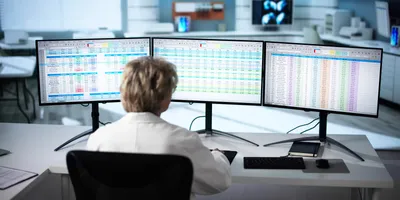Managing lab operations requires constant decision-making, often across competing priorities. With broad responsibilities and their teams depending on their direction, lab managers can quickly face decision fatigue. However, by evaluating each category of lab resources more strategically, managers can streamline their choices and improve outcomes—freeing up time and mental bandwidth for higher-impact leadership decisions.
Budgets and finances
Many resource decisions are dependent on the lab’s budget and finances. Ensuring sufficient revenue to operate the lab enables the lab manager to provide more staff hours, equipment, instruments, and space to deliver for the stakeholders. To improve the lab’s financial resources, consider these approaches:
- Surface and resolve complaints and delivery problems to encourage stakeholders to continue investing in the lab.
- Make good spending decisions to build trust with line management.
- Actively negotiate budgets with line management. Help them understand the risks to stakeholders if budgets are insufficient.
- Explore ways to expand the range of science practiced by the lab to attract more stakeholder investment.
Time
Staff time is the most valuable resource in the lab. For most labs, staff costs are the single largest budget item. How that investment is directed to deliver for its stakeholders involves critical decisions.
- Clearly communicate the lab’s priorities and make prompt priority decisions to help staff.
- Set metrics for time spent on different activities, measure the time staff spent using a timesheet application, and analyze the results. Use what is learned to improve the lab’s processes.
- Ensure that all staff know what to do next, especially if their top priority is blocked by something beyond their control.
- Use informatics to analyze the lab’s deliverables; laboratory information management systems (LIMS) are particularly valuable.
Knowledge and ideas
Science is a field that drives continuous learning. There is a constant stream of experiments, data, hypotheses, outcomes, reports, documents, lessons, and ideas. Decisions around this intellectual property influence the lab’s performance. It is problematic for labs to lose critical data and documents or to lose track of creative ideas. To prevent these losses:
- Ensure all data and documents are compliant with an ALCOA process.
- Ensure all meaningful data and documents are backed up with copies securely stored off-site.
- Conduct lessons learned to broaden organizational learning around outcomes and events.
- Develop communities of practice to help organize and retain critical knowledge for the lab.
- Document all ideas to ensure they are captured and can be referenced later.
Lab space
After staffing, facility-related expenses are typically the second-largest item in a lab’s budget. Making the best use of this space requires many decisions from lab managers:
- Evaluate the value of the science derived from each lab area. Repurpose the space that delivers low-value results with new activities of greater value to stakeholders.
- Map the use of lab space to optimize the way staff work. Group tools and materials by task and minimize walking distances to boost productivity.
- Segregate office and lab work. Office space is much less expensive than lab space.
Asset management
Lab managers must provide the tools, equipment, and instruments needed for staff to conduct high-quality science. There are many decisions—bounded by budgetary constraints and technical needs—around how the lab’s assets are acquired, used, maintained and serviced.
Acquisition
Few labs have the budget to acquire all the assets they want. Most labs need to effectively prioritize their needs in a capital budget to deliver the most important work for stakeholders. Consider the option to outsource lab work rather than invest in new equipment, if those activities are rarely needed or are outside the staff’s expertise.
In general, labs acquire new equipment through three different avenues:
- Buy new. Negotiate with vendors to generate the greatest value for the money spent.
- Buy used. Seek high-quality refurbished equipment. Used equipment is usually far less expensive than buying new.
- Lease. Arrange a lease agreement to have new equipment in the lab, but the costs are considered operational instead of capital. This is often a cost-effective way to maintain access to cutting-edge technology.
Asset usage
Use LIMS data and scheduling software to track asset usage. Investigate deviations between usage and priorities. Usage data can help identify equipment issues and assess asset value.
Preventive maintenance
Conduct regular preventive maintenance to keep equipment running properly and extend its lifetime to postpone another capital purchase. Develop schedules to ensure that all preventive maintenance is done on time.
Equipment repairs
Make effective decisions about how to respond to instrument breakdowns. Invest the right amount of budget to address the risks to stakeholders and key priorities. The options to resolve equipment breakdowns include:
- Service contracts. Pay in advance to ensure timely action for key, high-priority assets. Contracts are expensive, but they mitigate the risk of equipment failures.
- Pay as you go. Pay at the time of breakdown for a service provider to repair the equipment.
- Do it yourself. Pay for the repairs in staff time rather than paying a service provider.
- Dispose. When it’s not worth the investment to repair the equipment, it’s time to dispose of the asset and use that space for something more valuable to stakeholders.
Data-driven insights greatly improve the lab manager’s ability to make prompt, clear, and effective decisions. Labs have a wealth of different data coming from the LIMS, timesheet applications, and the quality management system. Analyze these data to identify the best choices. Incorporating this data with the lines of inquiry outlined above will strengthen decision-making around managing the lab’s resources.











